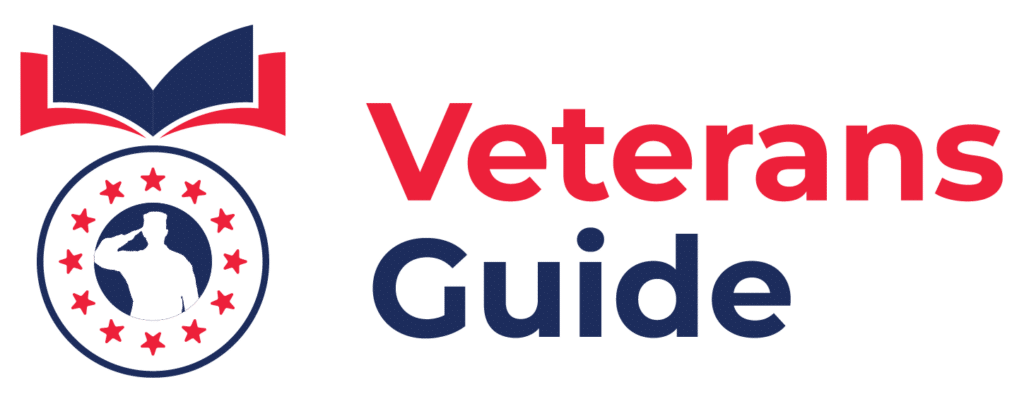VA Refinance Loan
A VA refinance loan can help you achieve your financial dreams by allowing you to access lower interest rates, lower your monthly payments, or tap into your home's equity for cash. The Veterans Affairs' partial guarantee often means you can secure better terms than you would get with a conventional loan. However, many veterans may have misconceptions about VA refinancing or be unsure about how to start the process.
Disclaimer: Paid advertising. We receive advertising fees from Novus Home Mortgage.
Learn how to refinance a VA loan and understand the pros, cons, and key eligibility requirements. Make the most of your home buying experiencing by understanding your benefits and make the right choice for your family’s financial future.
On This Page
- What Is a VA Refinance Loan?
- VA Interest Rate Reduction Refinance Loan
- VA Cash-Out Refinance Loan
- Who Is Eligible for a VA Refinance Loan?
- VA Refinance Loan Process: Step-by-Step
- Pros and Cons of Refinancing a VA Loan
- Frequently Asked Questions (FAQs)
- Take the Next Step: Navigating the VA Refinance Process
What Is a VA Refinance Loan?
A refinance loan allows homeowners to restructure their mortgage to take advantage of lower interest rates or get access to additional money. The VA offers two types of refinancing loans, depending on your primary goal.
When you refinance with a VA-backed loan, you enjoy many of the same benefits as a VA-backed mortgage. You won’t have to purchase private mortgage insurance, and you’ll have access to lower interest rates and better terms than conventional loans.
VA Interest Rate Reduction Refinance Loan
The VA IRRRL, or interest rate reduction refinance loan, lets you refinance your VA-backed mortgage to a lower interest rate with the same VA funding limits and guarantees. You can also refinance from an adjustable rate into a fixed rate.
To qualify for this financing, also known as Streamline Refinance for veterans, you must have an existing VA mortgage and receive a financial benefit from refinancing. You’ll have to pay closing costs and the 0.5% VA funding fee and meet the lender’s credit requirements for refinancing. You must also have made at least six payments on your current VA mortgage and be at least 210 days from the first due date on your original loan.
In most cases, you won’t need to get a new appraisal or provide income verification to refinance a VA home loan. In addition, the home you refinance doesn’t have to be your primary residence. You merely have to prove that you’ve lived there.
VA Cash-Out Refinance Loan
The VA cash-out refinance loan lets you get cash from your home’s equity. While there are no limits on what you can do with the money, many veterans use it for home improvements or paying off higher-interest debt.
If cash could help you get closer to your financial goals, this type of loan may be for you. While you can finance up to 100% of your home’s appraised value, your lender may set a lower limit. You can also combine it with other benefits, such as your 100% disabled veteran housing allowance.
Unlike an IRRRL, the property you’re financing must be your primary residence, and you must have your home appraised. You can use this type of loan on either a VA-backed or conventional mortgage. The VA funding fee is also higher: 2.15% if you’ve never had a VA loan and 3.3% otherwise.
While a cash-out loan makes sense for some, certain risks apply. If you secured your mortgage when interest rates were lower, you may pay more for your cash-out loan, especially if you have bad credit. It could take you longer to pay off your mortgage, too.
Who Is Eligible for a VA Refinance Loan?
The eligibility requirements for a VA refinance loan are similar to those of a VA-backed mortgage. You’ll have to fulfill service requirements or be a qualifying spouse and get your Certificate of Eligibility. If you are refinancing a mobile home loan, you may need to meet additional standards.
Like a VA-backed mortgage, you’ll also have to meet your lender’s standards. Generally, if you have better credit, you’ll secure better terms for your loan.
Even if you aren’t eligible for a VA refinance loan, we can assist you in calculating your VA disability rating, raising your rating, and determining any back pay you’re eligible for. We can also show you when to expect your disability payments.
VA Refinance Loan Process: Step-by-Step
Getting a VA refinance loan is much the same as securing a VA-backed mortgage. First, you have to secure your Certificate of Eligibility from the VA. This process takes about five days. While they’re waiting, many veterans also get pre-qualified with a lender to get an idea of what they can afford.
Look for a lender who has experience in handling VA loans. The best VA refinance lenders understand VA requirements and will help to make the process quicker and easier.
Next, your lender will draw up the terms of your loan. If you are getting a cash-out loan, you must also get your home appraised.
Then, you’ll sit down with your lender to sign the closing paperwork. You’ll be required to pay closing costs and the VA funding fee. Depending on the type of loan and your lender, the process can take a few weeks to a few months from start to finish.
Pros and Cons of Refinancing a VA Loan
While getting a VA-backed refinancing loan may be ideal for some veterans, it’s not for everyone. Understanding when you should refinance is key.
Refinancing loans can mean a lower interest rate, but you’re also responsible for closing costs and the VA funding fee. If you are getting an IRRRL, that could mean it takes a while to see savings. If you are getting a cash-out loan, those costs eat into the money you receive. A new loan also means new terms that might be worse than your current mortgage.
Refinance loans can change your timeline for repaying your mortgage. It could take several more years, especially if you have a cash-out loan. If you get a cash-out loan, you’re taking a risk that trading your home’s equity for cash will improve your financial situation.
Ultimately, it all comes down to your long-term financial objectives. A VA refinancing loan is a tool, not a cure-all.
Frequently Asked Questions (FAQs)
Check out our home loan FAQ and video library if you don’t see your question answered here.
Can I Refinance More Than Once With a VA Loan?
Yes, you can refinance as many times as you wish if you meet all other requirements.
Is There a Funding Fee for VA Refinance Loans?
Yes. The fee is 0.5% of the loan total if you have an IRRRL. If you have a cash-out loan, your funding fee is 2.15% if it’s your first VA loan or 3.3% if you’ve had a VA loan before. Exemptions may apply if you’re a surviving spouse or have a service-connected disability.
Can I Refinance From a Conventional Loan Into a VA Loan?
You can only refinance from a conventional loan to a VA loan if you are choosing a cash-out loan.
How Soon Can I Refinance After Closing?
Generally, the closing date on your new loan needs to be at least 210 days after the first due date of your original mortgage payment. You’ll need to have made six mortgage payments.
Is a Credit Check Required for VA IRRRL?
While requirements vary among lenders, most will perform a credit check.
Take the Next Step: Navigating the VA Refinance Process
Whether you’re looking to take advantage of lower interest rates or access money to invest in your home, a VA refinance loan can assist you in reaching your goals. VA-backed refinancing loans can let you take the next step in building your financial dreams, especially if you work with a VA-approved lender that understands the process.

Jodiu has over 22 years in home lending, specializes in VA loans, and helping military families achieve homeownership. As a top loan officer at Novus, he’s closed over 9,000 loans across 40 states. Jodi is dedicated to empowering veterans with VA benefits, fostering long-term financial success, and offering personalized service.






